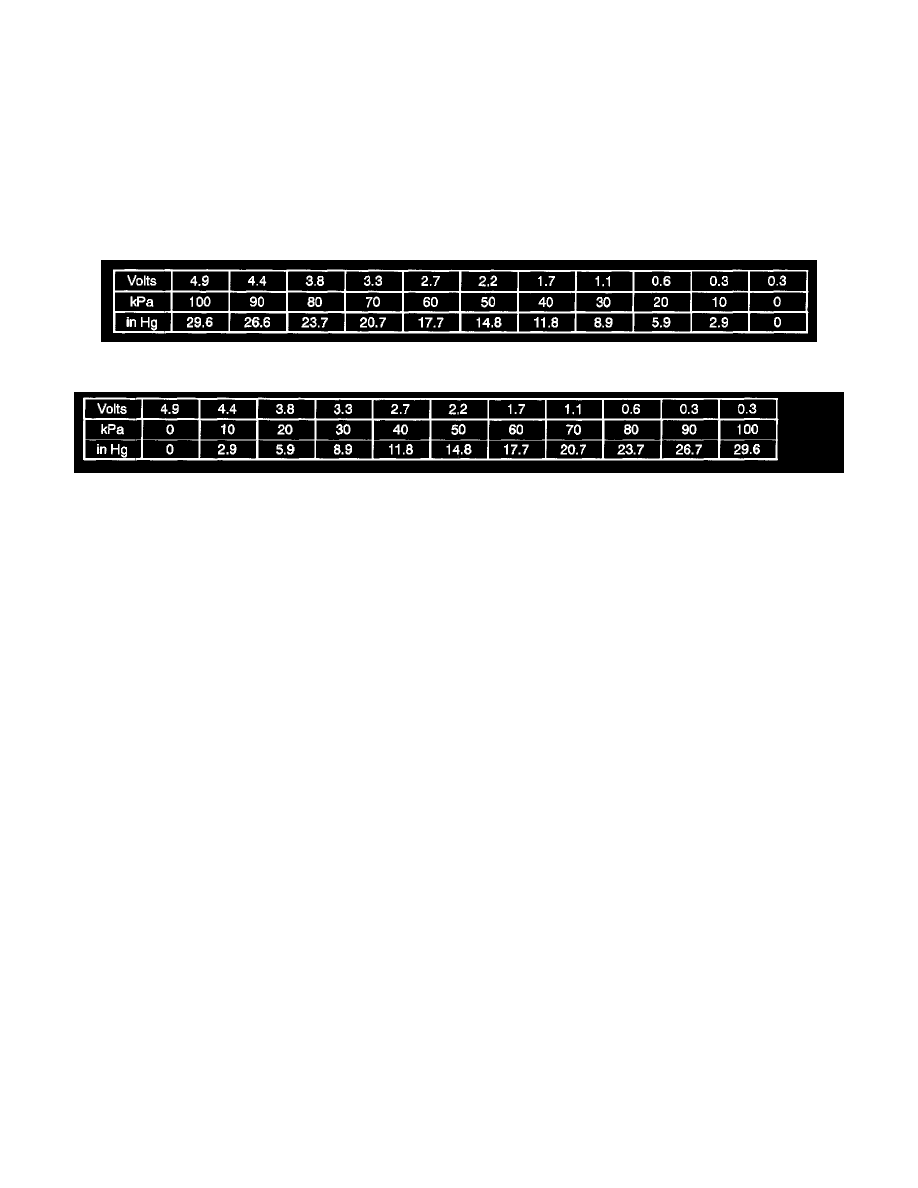Lanos SX Sedan L4-1.6L DOHC D-TEC MFI (2001)

Manifold Pressure/Vacuum Sensor: Description and Operation
The Manifold Absolute Pressure (MAP) sensor measures the changes in the intake manifold pressure which result from engine load and speed changes
and converts these to a voltage output.
A closed throttle on engine coast down produces a relatively low MAP output. MAP is the opposite of vacuum.
When manifold pressure is high, vacuum is low. The MAP sensor is also used to measure barometric pressure. This is performed as part of MAP sensor
calculations. With the ignition ON and the engine not running, the powertrain control module (PCM)/engine control module (ECM) will read the
manifold pressure as barometric pressure and adjust the air/fuel ratio accordingly. This compensation for altitude allows the system to maintain driving
performance while holding emissions low. The barometric function will update periodically during steady driving or under a wide open throttle
condition. In the case of fault in the barometric portion of the MAP sensor, the PCM/ECM will set to the default value. A failure in the MAP sensor
circuit sets a diagnostic trouble code P0106, P0107 or P0108.
Map
Vacuum
The above tables show the difference between absolute pressure and vacuum related to MAP sensor output, which appears as the top row of both tables.
